My 2017 innovation radar vs. Benedict Evans’ 2020 tech assessment

In 2017, I was predicting a few things that I believe are now pretty obvious for everyone in 2020. Let’s contrast what I was forecasting, from some of the perspectives on technology that Benedict EVANS just published a few days ago in Tech in 2020: Standing on the Shoulders of Giants.
I will unroll the 9 points I was seeing in 2017 as turnouts for tech, and check where we are in 2020 (Spoiler: Expect some humble bragging):
1. Energy as the glue of innovation
In 2020, Tesla is the only automaker aggressive on electric vehicles in the West. One key reason is that they own most of the car battery manufacturing capabilities.
Evans is mute on how tech and energy are linked (expect when addressing regulations) and I think he’s missing out on real important underlying cycles there 🤗
2. Payment as the glue of innovation
Apple and many others have demonstrated since then how wrapping up payment to a platform is transformative.
Same as Energy, Evans talks a lot about eCommerce and where it’s going. But he fails to address that China is leading the way because of how online / offline payments all other the country are just the same.
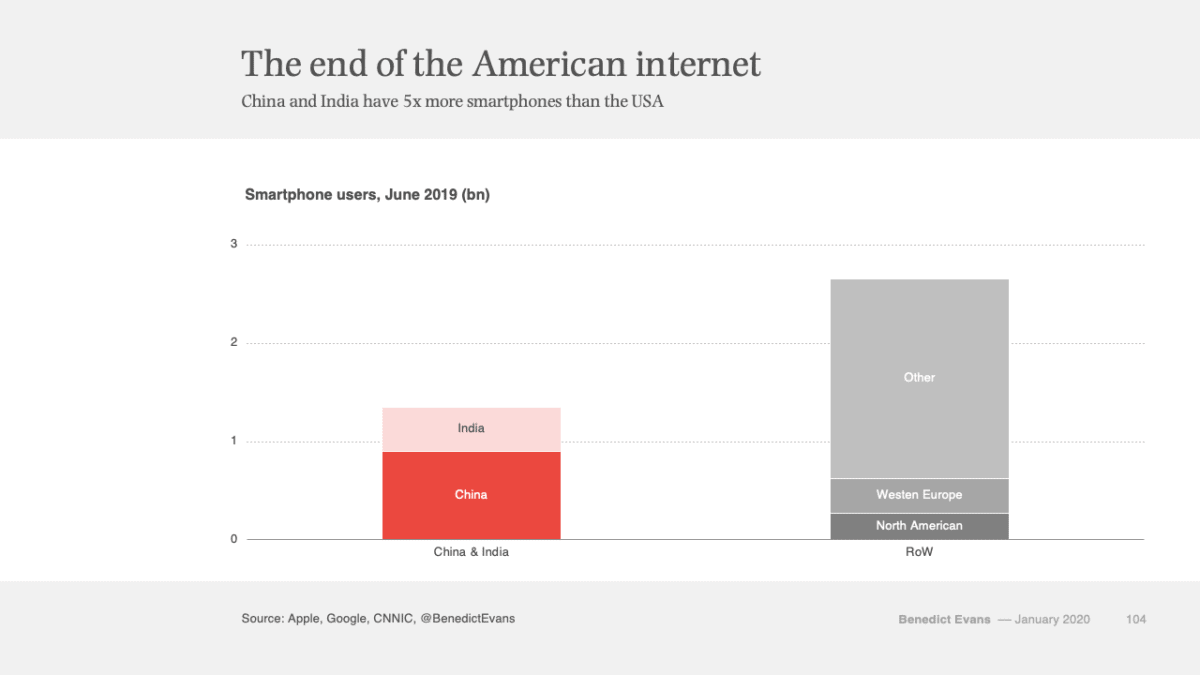
3. Mobile at a plateau, what now?
This question in 2020 is even bigger, because the answer hasn’t been find (no it’s not IoT or AR / VR).
Well, I think it’s fair to say that this one Is so obvious now, it doesn’t need any comment anymore.
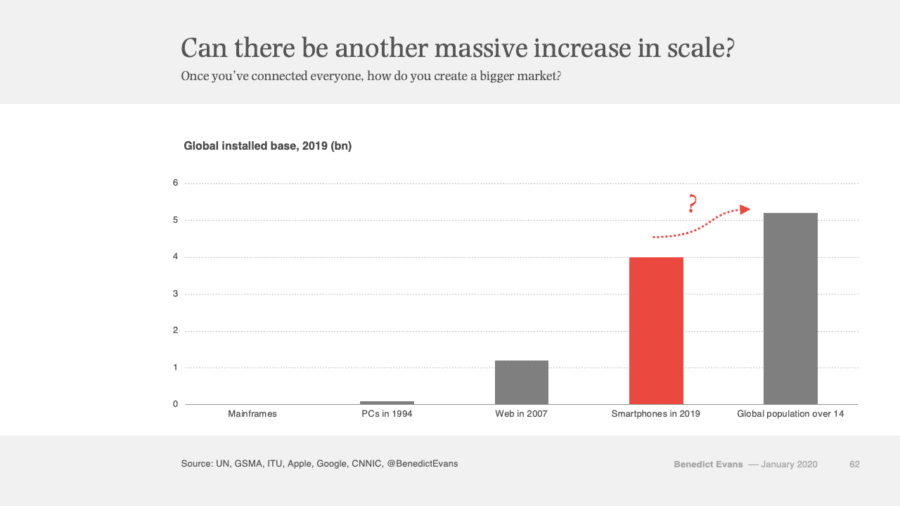
4. Rise of China tech
We are there. China in 2020 is a tech super-power and among other things, will be the largest patent producer worldwide. Since then, we’ve witnessed the first trade war against Huawei and its 5G tech.
Evans reckons too that Huawei and others are precursors of the new normal in tech:
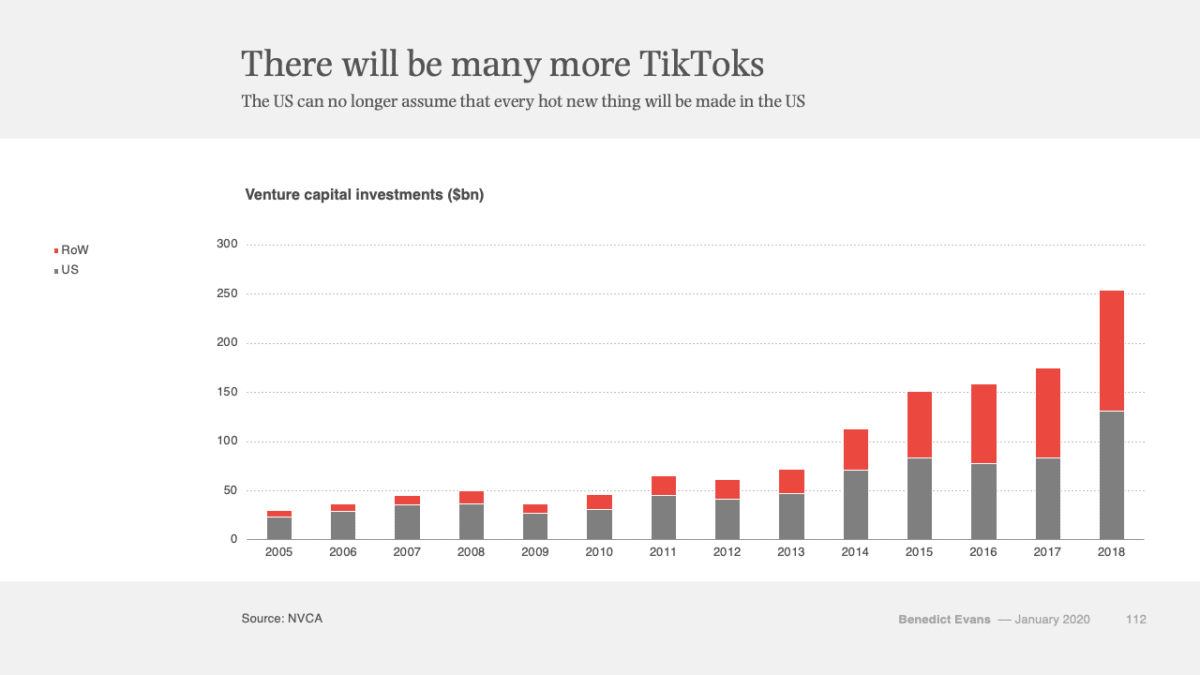
5. Invisible technology
Probably the only prediction where I was to expecting more earlier on. But this is still for me the next wave of tech development to expect. We are still on the verge of an explosive growth of B2B platform services.
Evans shares this question too. While we can ask where are the new Amazon Web Service for supply chain, healthcare, or mobility, AWS itself is ramping up fast:
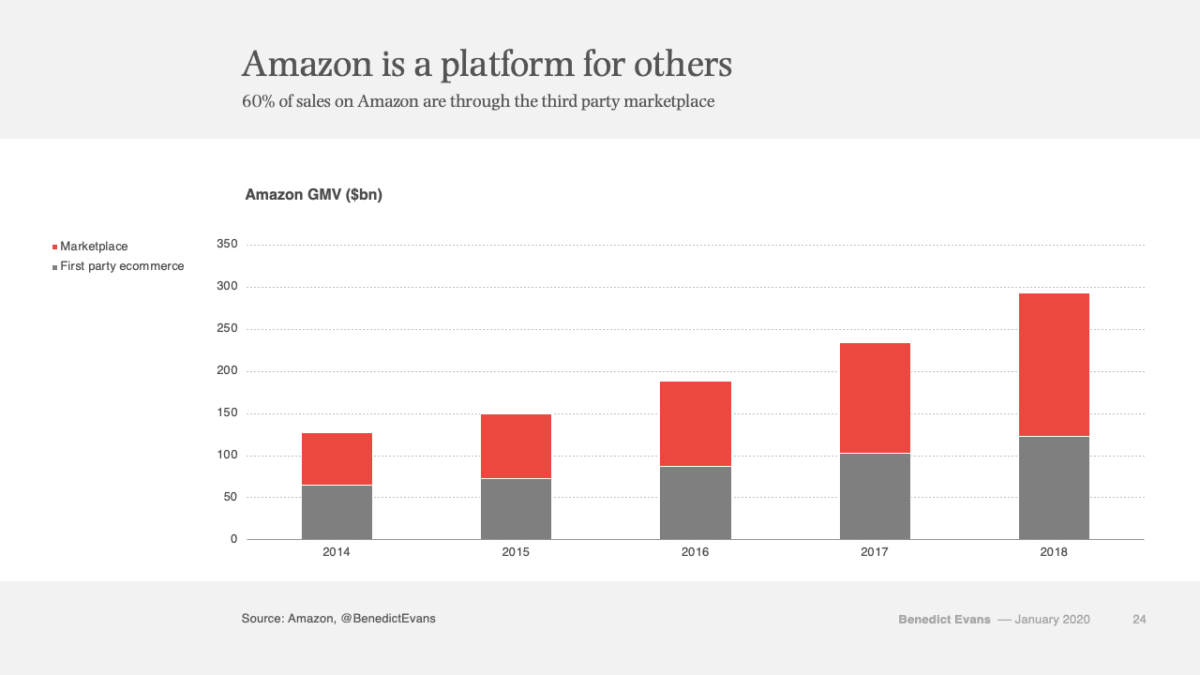
6. Autonomous vehicles already seeding next gen techs
Since 2017, although AVs are still rare on open roads, the patents they unlocked and the technologies they seeded in the market are everywhere. And we’re not done yet.
Evans is mute on this one. Probably because it’s too much of a vertical thing in his perspective. But I still believe that AVs are actually having a very ‘horizontal’ transformative power.
7. Smart enough bots
In 2017 my vision of AI and automation was more pragmatic than what was broadcasted everywhere. I was adamant that we were in a hype cycle that would calm down and focus on more reasonable pathways to the market.
On this one, I was probably too optimistic. The market is still trying to figure out how to deliver very complex solutions, while our Alexa or Siri are still incapable of delivering proper services past setting a timer o-in the kitchen or giving us the weather.
8. Apple as a Service
Also a big one, where I was spot on well before Apple announced its strategy of developing their massive service strategy.
Evans doesn’t address this directly, but do talks a lot about the content war on TV, which Apple is clearly a part of.
9. Startups rude awakening
It’s indisputable that many issues soured the global narrative around startups and entrepreneurship, since 2017. The explosion of abuses, fakes and global toxicity of these platforms is now the new narrative.
Evans pushes the discussion where it should be in 2020 — and where I was not expecting it yet: new regulations!
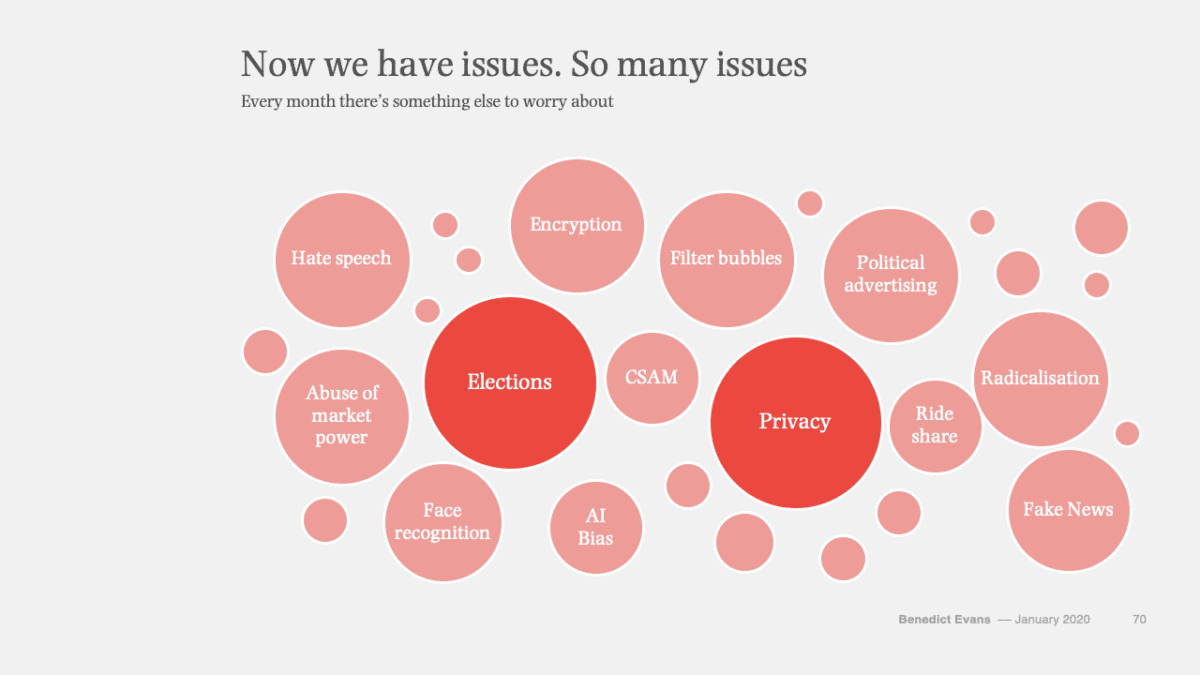
In conclusion…
Forecasting in tech markets is widely misunderstood. Yes, it’s a fun game and it’s even more fun to check that you were spot on with many of your old predictions. But that’s not really the point. The game here is to map the deep undercurrents, the ley lines that silently drive the markets future outcomes.
I often explain to my customers that it’s not such a difficult game: remove everything about tech that is on a short cycle and just focus on long cycles. Want to predict autonomous vehicles? Follow energy investment and social acceptability.
What will change slow and/or require massive capital expenditures over time will dictate the shape of things to come.




